Shapefile
Type of resources
Available actions
Topics
Keywords
Contact for the resource
Provided by
Years
Formats
Representation types
Update frequencies
Scale
Resolution
-

Sumarið 2016 var grunnstöðvanet Íslands mælt í þriðja sinn. Niðurstöður voru kynntar vel sóttum fundi á Grand Hótel þann 14. nóvember 2017. Með lýsigögnunum fylgja hnitalistar þeirra mælistöðva sem unnið var úr eftir ISNET2016 mælingarnar og mynda grunnin fyrir nýja viðmiðun ISN2016. Hnitin eru birt sem jarðmiðjuhnit, baughnit með hæð yfir sporvölu GRS80 og hornsönn keiluhnit Lamberts með hæð yfir GRS80. Fengnir hafa verið EPSG númer fyrir ISN2016 (sjá einnig af töflu með EPSG sem fylgir lýsigögnunum): Nafn - EPSG númer - Tegund: Islands Net 2016 / ISN2016 EPSG::1187 Viðmiðun (Geodetic Datum) ISN2016 / Lambert 2016 EPSG::8088 Hnitakerfi í kortavörpun (ProjectedCRS) ISN2016 EPSG::8084 Jarðmiðjuhnit (GeodeticCRS (geocentric)) ISN2016 EPSG::8085 Baughnit með sporvöluhæð (GeodeticCRS (geographic 3D)) ISN2016 EPSG::8086 Baughnit (GeodeticCRS (geographic 2D)) Hægt er að hlaða niður Shape skrá sem inniheldur hnit mælistöðvanna auk annara upplýsinga. Einnig hafa verið gerð svokölluð vörpunarnet til þess að varpa úr ISN93 og ISN2004 yfir í ISN2016. Netin eru á svokölluðu NTv2 formi fyrir breytingar í legu og gtx formi fyrir breytingar í hæð. Unnið er nú að leiðbeiningum hvernig nota eigi þessi net í landupplýsingahugbúnaði, auk þess sem haft verður samband við hugbúnaðarframleiðendur um að koma þessum vörpunum inn í næstu hugbúnaðaruppfærslur. Vörpunarnetin með leiðbeiningum verða birt á heimasíðu Landmælinga Íslands og á niðurhalsþjónustu í byrjun næsta árs.
-
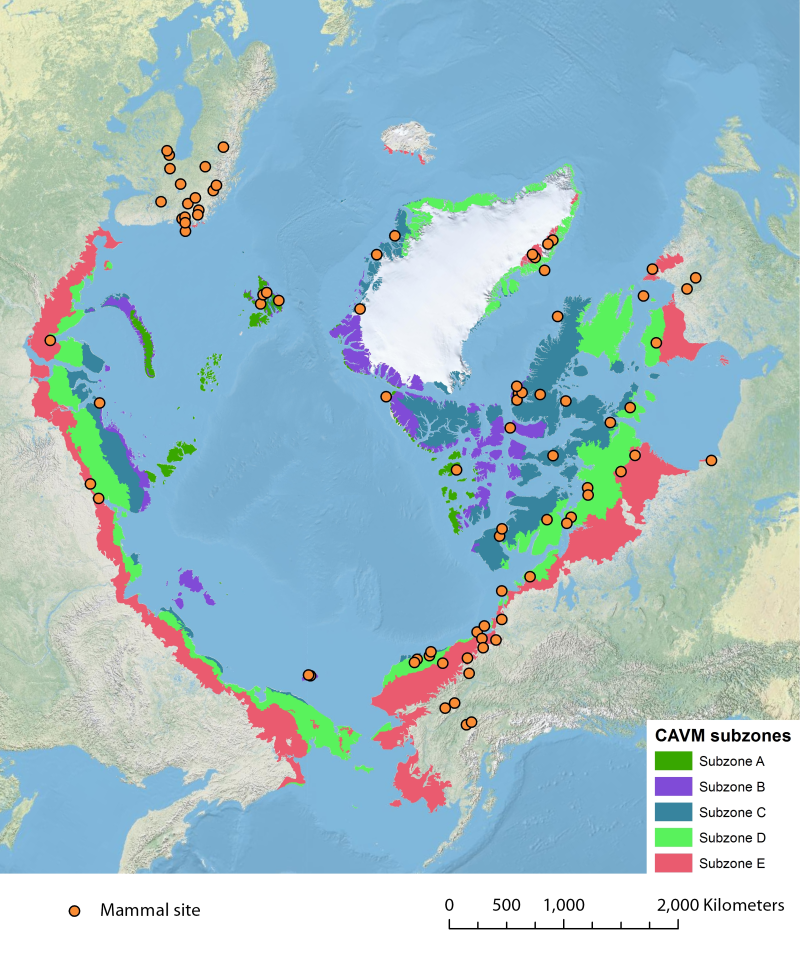
Location of long-term mammal monitoring sites and programs. Comes from the Arctic Terrestrial Biodiversity Monitoring Plan is developed to improve the collective ability of Arctic traditional knowledge holders, northern communities and scientists to detect, understand and report on long-term change in Arctic terrestrial ecosystems and biodiversity..
-
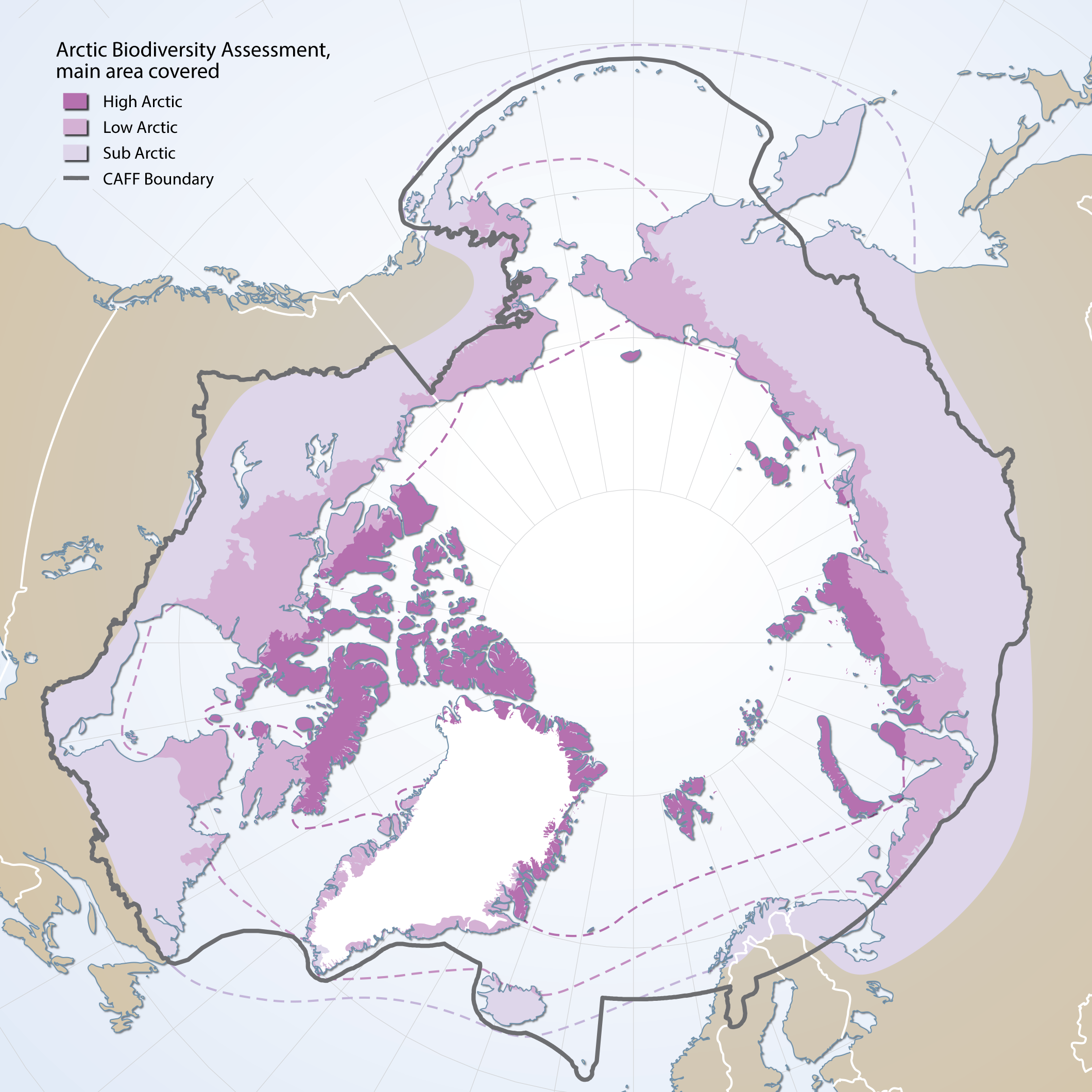
Boundaries of the geographic area covered by the Arctic Biodiversity Assessment. Includes sub, low and high Arctic bounbaries
-
Vatnsföll eru gjarnan flokkuð í þrjá flokka, dragár, lindár og jökulár eftir rennslisháttum. Mörg eru vatnsföllin þó af blönduðum uppruna vegna margbreytileika vatnasviða þeirra. Gagnasettið sýnir greiningu vatnasvæða í vatnafarsflokka, eftir því hvernig svæðið bregst við úrkomu og miðlar henni, og rennslisháttum vatnsfalla sem eiga uppruna sinn á viðkomandi svæði.
-
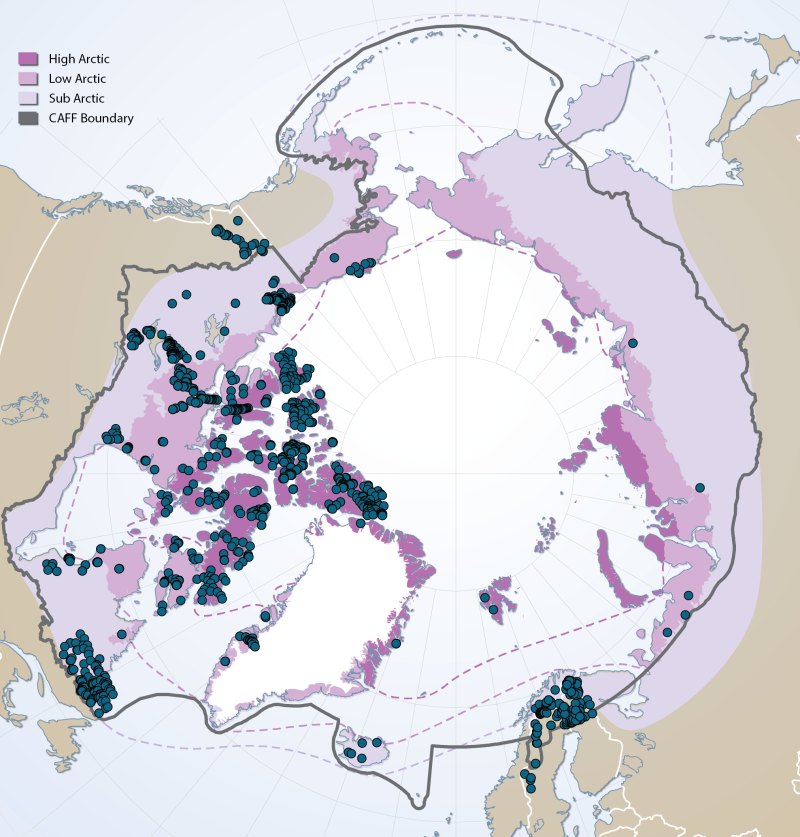
Sites of existing lake biotic and abiotic data as compiled by the Freshwater Expert Monitoring Group (FEMG) of the Circumpolar Biodiversity Monitoring Group (CBMP) Published in the CBMP Freshwater Brochure 2013 https://oaarchive.arctic-council.org/items/e76cce2c-4c87-4eb4-89d3-c88c3ae955d6
-
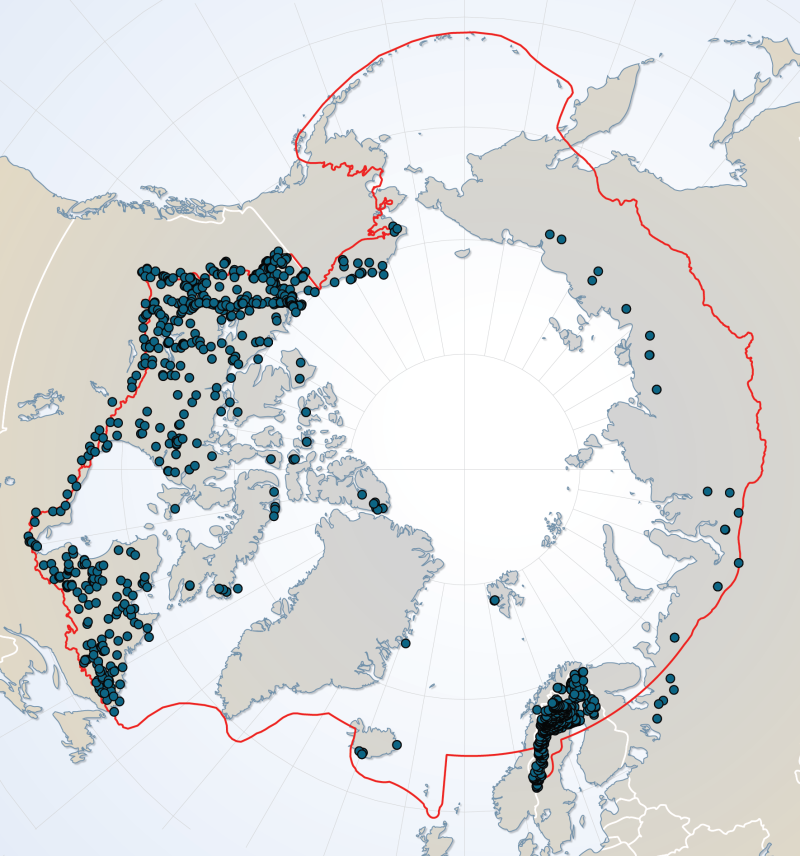
River dataset showing location of study sites in rivers for the Arctic Freshwater Biodiversity Monitoring Plan. Published in the Arctic Freshwater Monitoring Plan Brochure released in 2013 http://www.caff.is/monitoring-series/view_document/277-arctic-freshwater-biodiversity-monitoring-plan-brochure
-
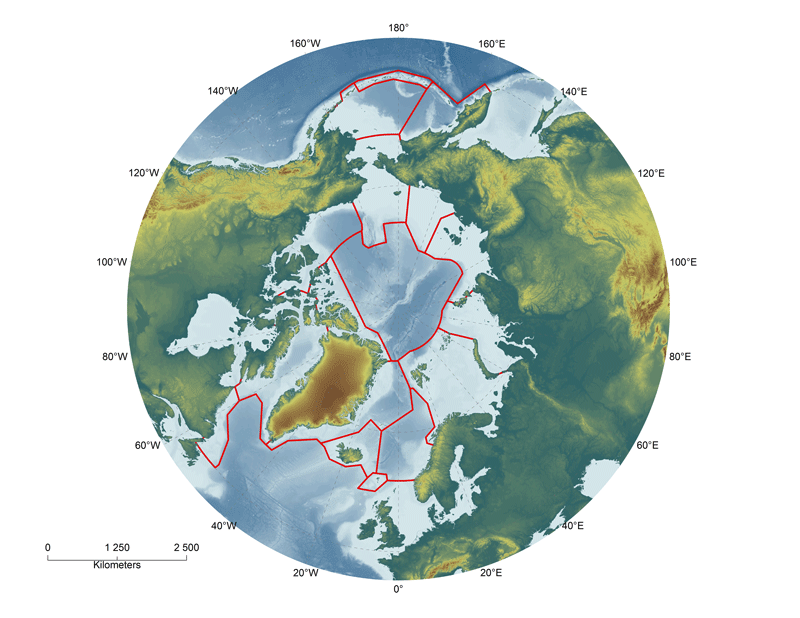
A total of 95 areas of heightened ecological significance have been identified within the Arctic LMEs. The areas were identified primarily on the basis of their ecological importance to fish, birds and/or mammals, as these species are the most widely studied Arctic groups. The majority of areas identified are used by birds (85) and marine mammals (81), with a lower number used by fish (40, most of them spawning areas). About 70 areas are used both by birds and mammals, and only two of the areas identified are used only by fish.The areas of heightened ecological significance comprise a total area of about 12 million km2, or more than half the total area of the ice-covered part of the marine Arctic. The areas are generally not homogenous but comprise subareas used by fish, birds or mammals. Based on the approach used, subareas were identified separately for fish, birds, and mammals, or information on the use of the larger areas by these groupswas summarized. The subareas often overlap and are also often used by two or more species of birds or mammals, such as for breeding in seabird colonies or for staging by waterfowl and shorebirds. Information on species present and the times and purposes of use are given in summary tables for each LME. Thus, while the areas identified as being of heightened ecological significance cover a large total area, this is the aggregate area used over all seasons throughout the year. The area used at any one time is lower due to the strong seasonal pattern in the annual migratory cycles of fish, birds and mammals.
-
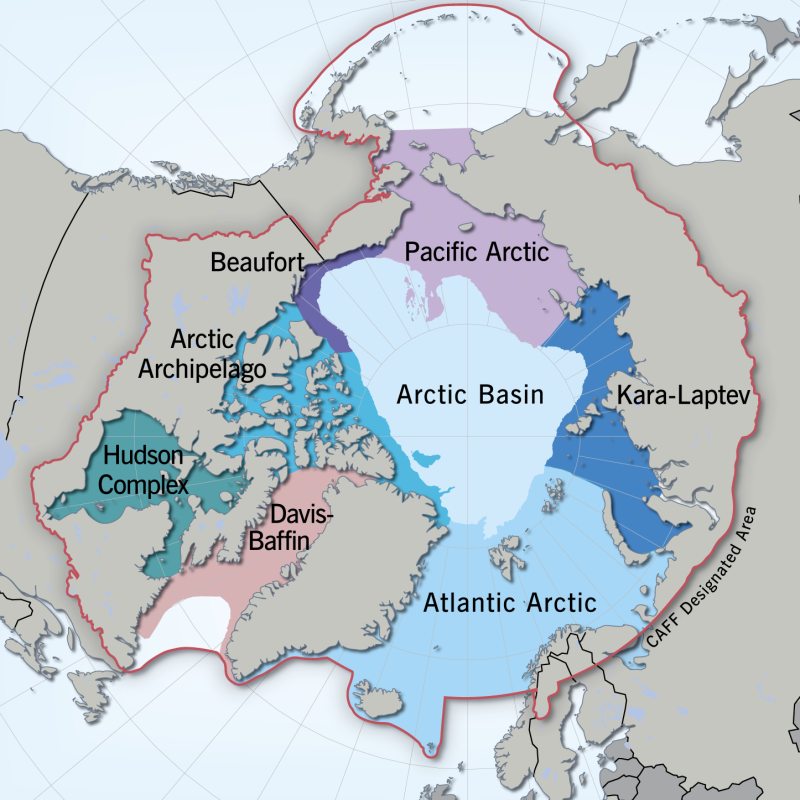
Regional divisions of the marine Arctic, as determined by the Marine Expert Monitoring Group of the Circumpolar Biodiversity Monitoring Programme (CBMP). The Circumpolar Marine Biodiversity Monitoring plan identifies eight Arctic Marine Areas where a suite of common parameters, sampling approaches and indicators will be used. Regionally specific parameters may also be applied. Exact boundaries may change over time to reflect changing bio-physical conditions. <a href="http://caff.is/marine/marine-monitoring-publications/3-arctic-marine-biodiversity-monitoring-plan" target="_blank"> Published in the Arctic Marine Biodiversity Monitoring Plan, Chapter 2, page20 - released in 2011 </a>
-
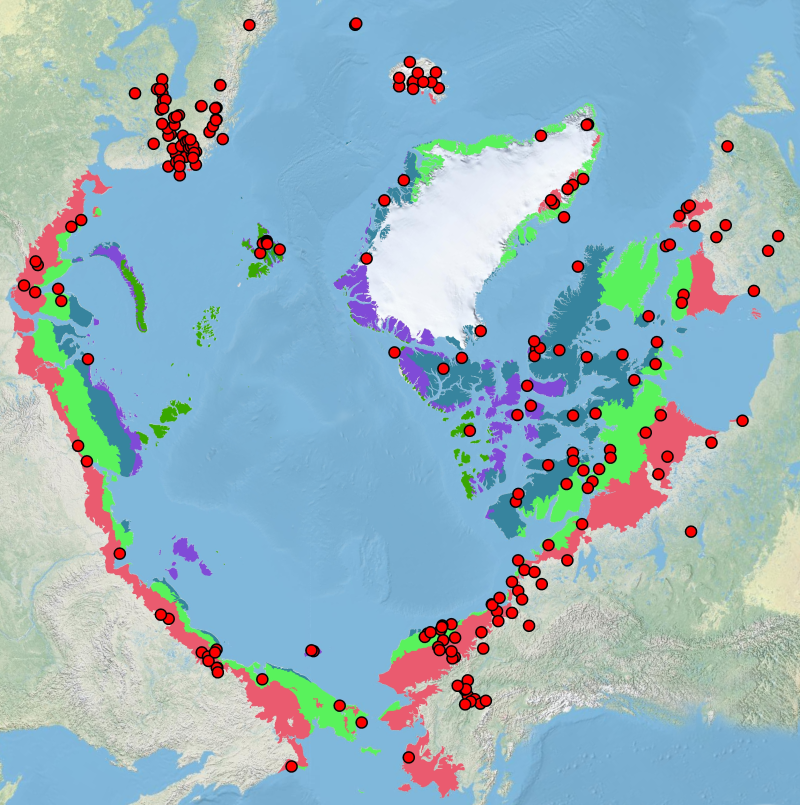
The Arctic Terrestrial Biodiversity Monitoring Plan is developed to improve the collective ability of Arctic traditional knowledge holders, northern communities and scientists to detect, understand and report on long-term change in Arctic terrestrial ecosystems and biodiversity.
-
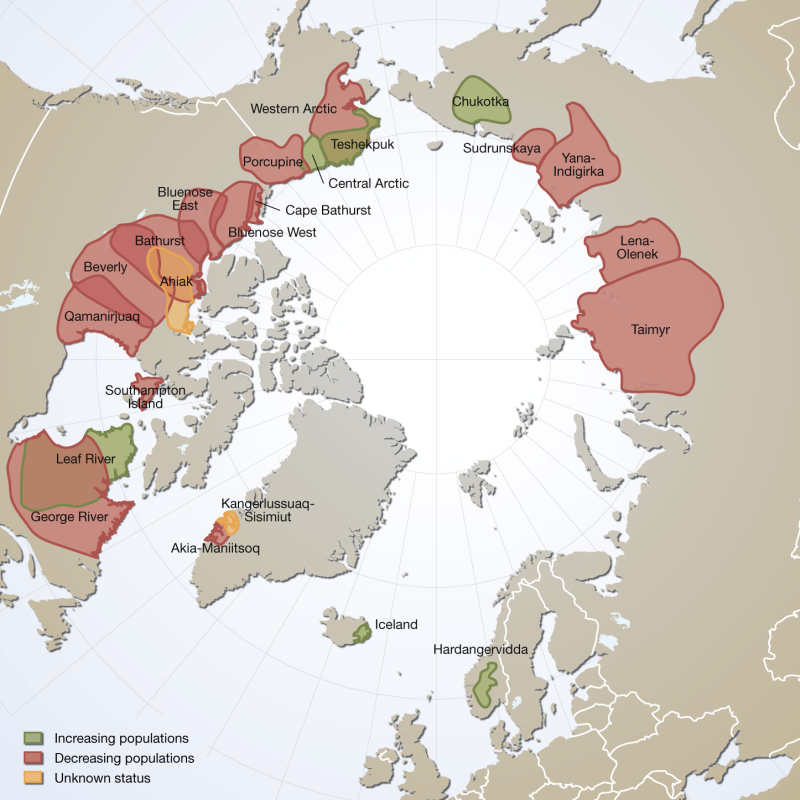
Distribution and observed trends of wild Rangifer populations throughout the circumpolar Arctic (from The Circum Arctic Rangifer Monitoring and Assessment Network, CARMA). Note: Wild boreal forest reindeer have not been mapped by CARMA and thus are not represented here. Published in the Arctic Biodiversity Trends 2010 - Selected indicators of change, INDICATOR #02 - released in 2010
 Arctic SDI catalogue
Arctic SDI catalogue